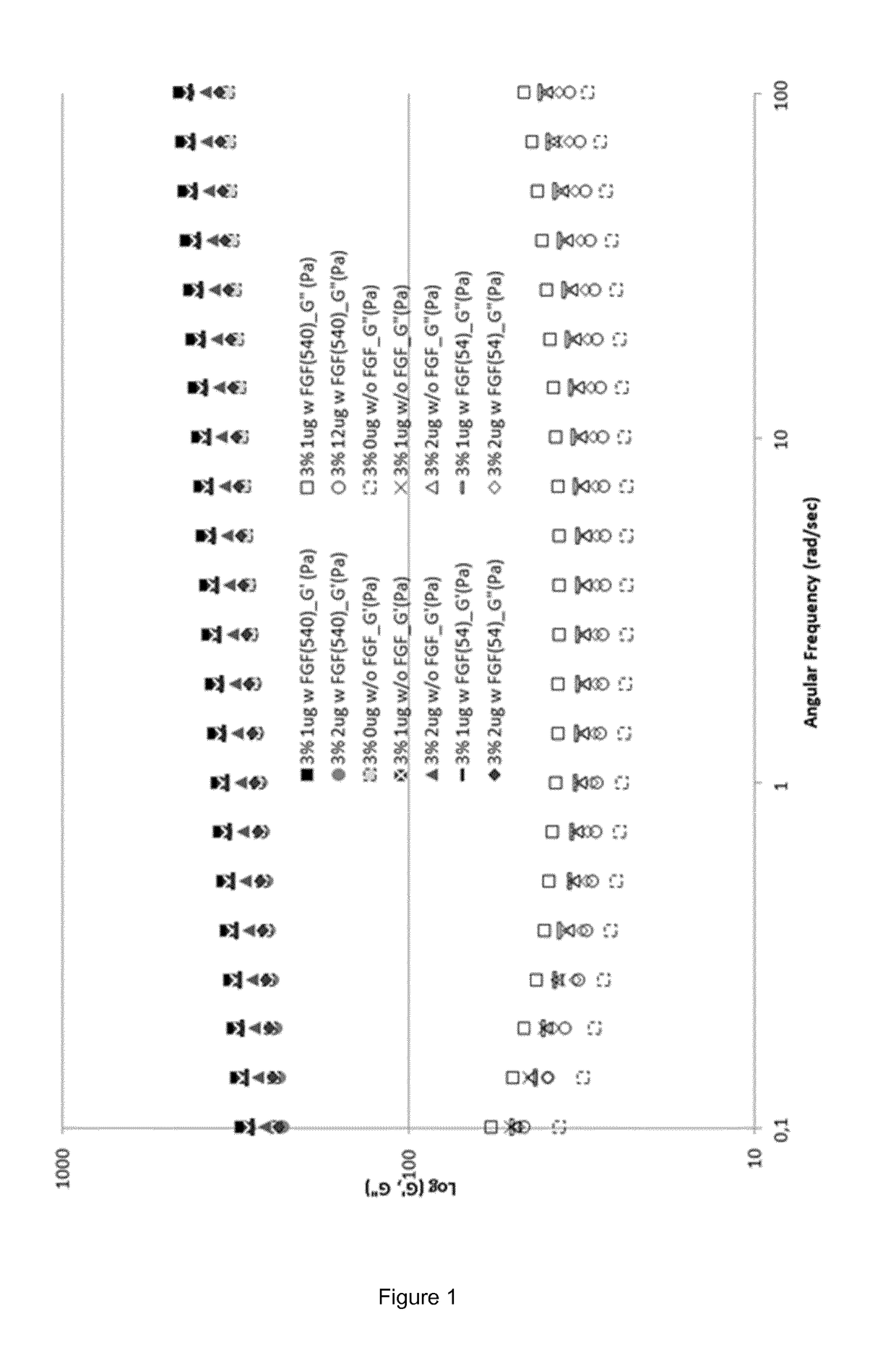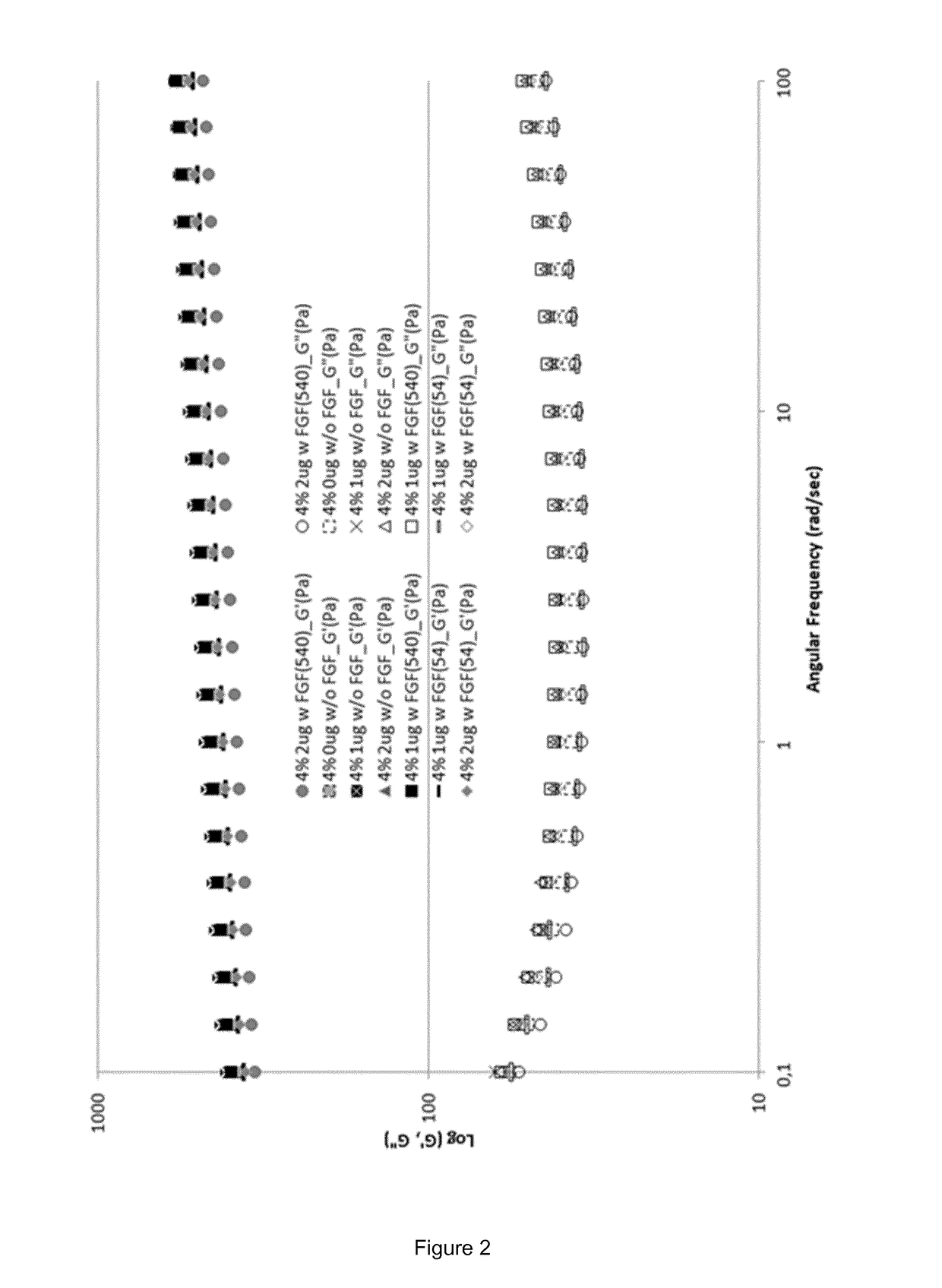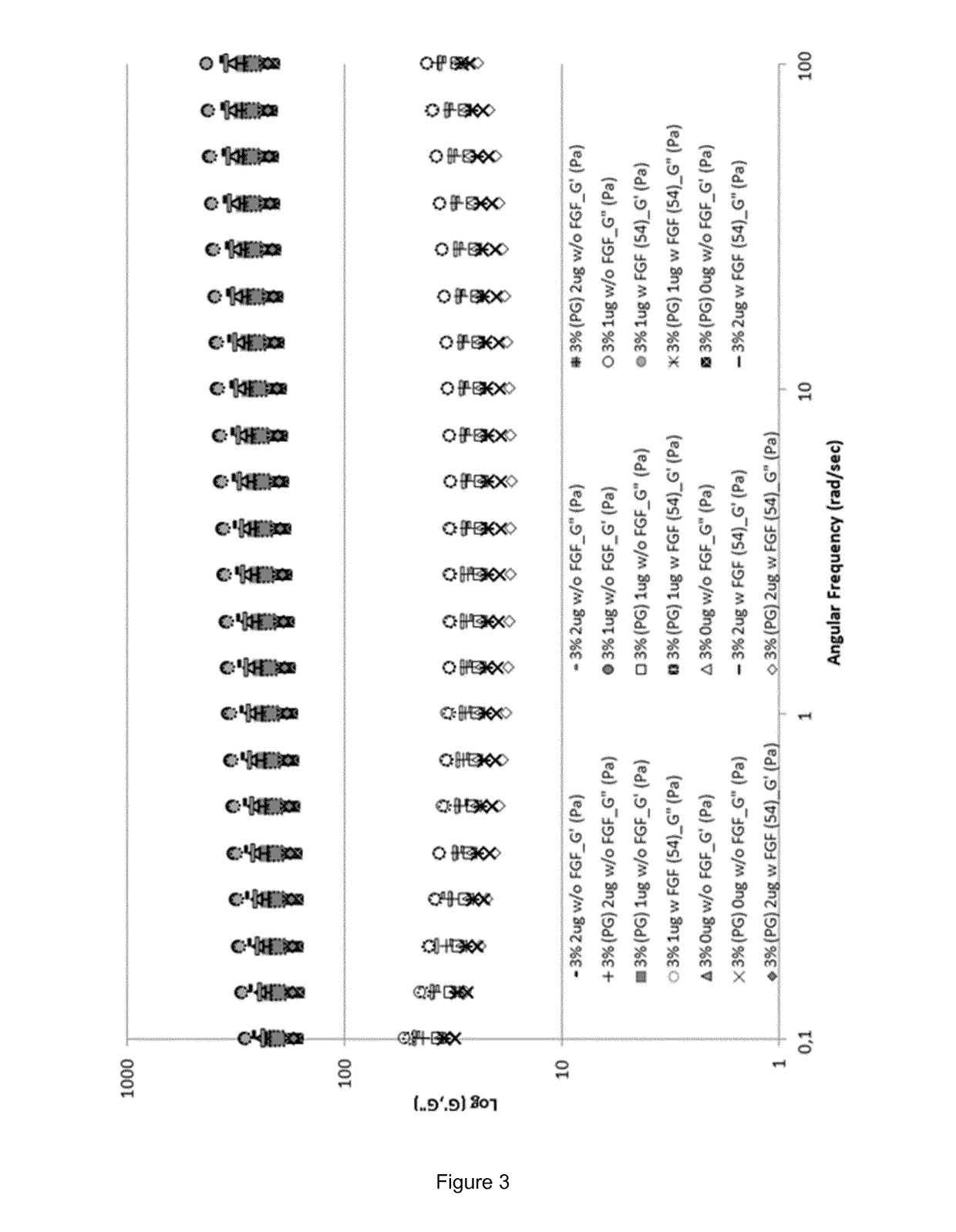FGF-18 formulation in alginate/collagen hydrogels
a technology of collagen hydrogel and fibroblast growth factor, which is applied in the field of pharmaceutical formulations, can solve the problems of reduced joint mobility, loss of activity/stability of protein, and unwanted effects
- Summary
- Abstract
- Description
- Claims
- Application Information
AI Technical Summary
Benefits of technology
Problems solved by technology
Method used
Image
Examples
example 1
lations
[0128]During the pre-formulation work, either alginate or chitosan were mixed with other excipients in order to obtain aqueous solutions with an acceptable osmolality for i.a. injections (target: 350 mOsm / Kg). The liquid solutions were then tested for their gelation time and temperature. Formulations able to form hydrogels within 5 minutes and / or at a temperature around 37° C. were further formulated with FGF-18 at different concentrations (data not shown).
example 2
on of Ion-Responsive Gels (Alginate)
Generalities
[0129]Sodium alginate was used to obtain an ion-responsive gel, as in the presence of divalent cations working as cross-linking agent between the polymer chains, such as Ca2+, it is able to form a polymeric network giving rise to a hydrogel. The formulation consisted of two solutions, one containing the polymer and the other containing the ions. Once mixed together, the solutions formed a gel.
[0130]The calcium solution was the same for both placebo and active gels and consisted of a solution of calcium chloride CaCl2 in Milli-Q water at a concentration of 10 mg / mL. In the polymer liquid solution, in addition to alginate, collagen type I and the active molecule were added (here, sprifermin), as well as sucrose for adjusting the osmolality value. Placebo polymer liquid solution was prepared as follows: a solution of sucrose in Milli-Q water at a concentration of 70 mg / mL was prepared and used to dissolve sodium alginate at a concentratio...
example 3
on of Temperature-Responsive Gels (Chitosan)
Generalities
[0143]For the screening of chitosan formulations, the preparation of the polymer liquid solutions made use of three different chitosans: 95% deacetylation degree (DD) with high molecular weight (HMW), 95% DD with low MW (LMW) and 75% DD with high MW (HMW). Polymer liquid solutions were prepared by gradually adding the chitosan to a solution of acetic acid 0.1 N under vigorous stirring at either 5° C. or 25° C. The amount of polymer was calculated to have a final polymer concentration in the polymer liquid solution of 1% wt, 1.5% wt or 2% wt. Once the chitosan was completely solubilized, a solution of KH2PO4 at concentration of 10 mM, 100 mM or 500 mM in Milli-Q water was added under stirring, to have a final concentration in the polymer liquid solution of either 1 mM, 10 mM or 50 mM. Finally, a solution of β-glycerophosphate (β-GP) at a concentration of 20% wt in Milli-Q water was added in order to adjust the pH of the final li...
PUM
| Property | Measurement | Unit |
|---|---|---|
| concentration | aaaaa | aaaaa |
| concentration | aaaaa | aaaaa |
| concentration | aaaaa | aaaaa |
Abstract
Description
Claims
Application Information
 Login to View More
Login to View More - R&D
- Intellectual Property
- Life Sciences
- Materials
- Tech Scout
- Unparalleled Data Quality
- Higher Quality Content
- 60% Fewer Hallucinations
Browse by: Latest US Patents, China's latest patents, Technical Efficacy Thesaurus, Application Domain, Technology Topic, Popular Technical Reports.
© 2025 PatSnap. All rights reserved.Legal|Privacy policy|Modern Slavery Act Transparency Statement|Sitemap|About US| Contact US: help@patsnap.com



